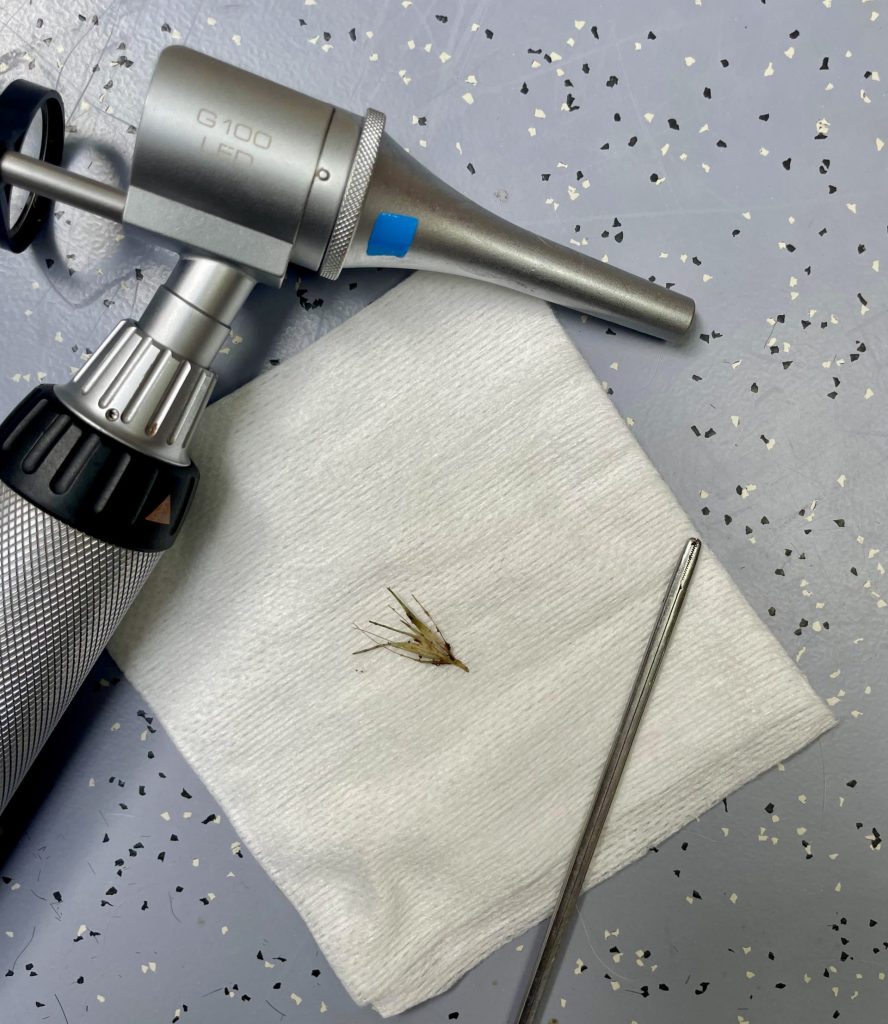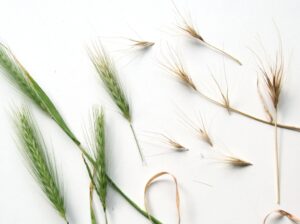The grass awn season has begun!
With the arrival of spring, we once again see them appear: grass awns. These sharp grass fragments grow in areas where the grass is tall, such as road verges, fields, and along sidewalks. Although they may seem harmless, grass awns can cause serious issues for dogs. They easily become entangled in a dog’s fur and may even penetrate the skin, leading to irritation, pain, and infections.
What are grass awns?
Grass awns – also known as “crawlers” – are the seeds of certain grass species. They have sharp ends with tiny barbs, which allow them to stick easily in an animal’s fur. Once attached, they only move in one direction: further into the skin or body. Consequently, grass awns can find their way into ears, noses, eyes, between the toes, or under the skin.
Risk of grass awns

The risk of encountering grass awns is highest during the summer months. The heat causes them to dry out, making them lighter and even sharper, which allows them to embed more easily in the fur. Dogs with medium to long hair are particularly vulnerable. Common trouble spots include:
- Between the toes
- In the ears
- In skin folds around the legs
- Around the neck and head
Preventing gras awns on your dog
You can take several measures to protect your dog:
- Avoid areas with tall grass – Stay alert during walks and try to steer clear of locations with wild vegetation.
- Check your dog’s coat after every walk – Pay special attention to the paws, ears, and armpits. The sooner you spot a grass awn, the better.
- Regularly trim your dog’s coat – Especially for long-haired dogs, keeping the hair short around high-risk areas such as between the toes and around the ears can help prevent problems.
What of your dog has a grass awn?
If a grass awn has penetrated the skin or crawled into an ear or nose, it can cause:
- Swelling
- Pain
- Infections
- Excessive head shaking (in cases of ear involvement)
- Sneezing or nasal discharge (when nasal areas are affected)
Try to remove the grass awn yourself only if you can clearly see it and extract it easily. It is crucial to remove the awn completely. If this is not possible or it is embedded too deeply, contact your veterinarian immediately. Often, it may be necessary to remove the grass awn under local anesthesia or with mild sedation.
Watch our video
In the accompanying video, one of our veterinarians demonstrates the removal of a grass awn from a dog’s ear canal. In this instance, the procedure was performed without anesthesia, but that is not always an option.
If a grass awn remains unnoticed in the ear, it can continue to penetrate further, eventually damaging the eardrum—a condition that can cause considerable pain and permanent damage.


